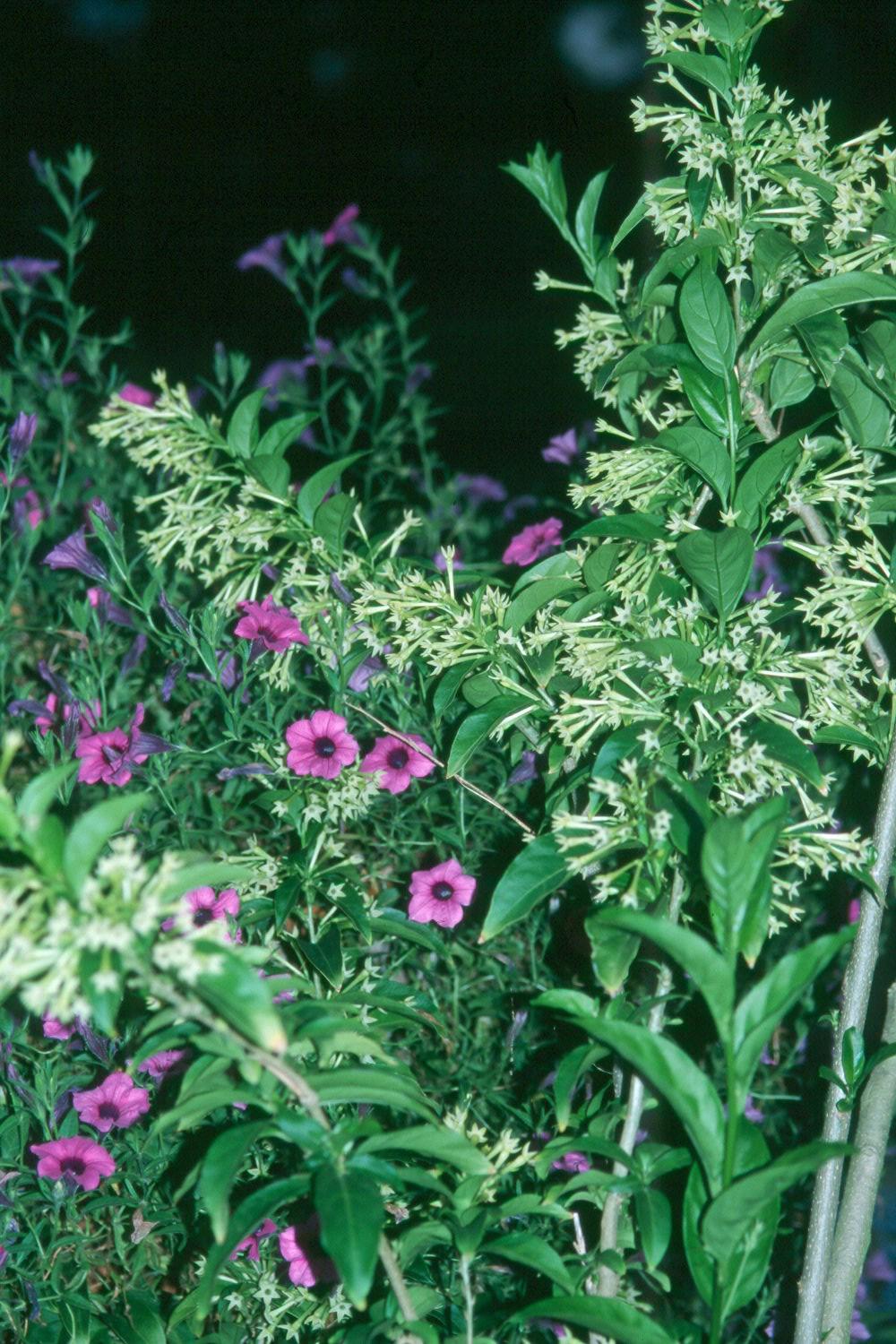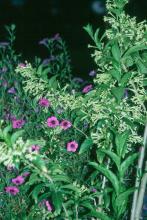Information Possibly Outdated
The information presented on this page was originally released on April 22, 2002. It may not be outdated, but please search our site for more current information. If you plan to quote or reference this information in a publication, please check with the Extension specialist or author before proceeding.
Don't overlook Night Jasmine's fragrant appeal
By Norman Winter
MSU Horticulturist
Central Mississippi Research & Extension Center
If someone told me I could only grow one plant, I would probably choose several night blooming jasmine, but not because of their beauty. It is their fragrance that makes them a must-have in every landscape.
Actually, the night blooming jasmine is nothing fancy to look at, and I usually have to grow something at the base of the plant to give it some pizzaz. I am passionate about this homely looking plant because the night blooming jasmine is unequaled in flooding the yard with the most wonderful, intoxicating fragrance.
As the name suggests, the miracle occurs at night when you can't even see what is happening. My first encounter was in Jamaica, and I have been addicted to the plant and fragrance since.
It is incredible that these small, yellow, trumpet-shaped flowers have the kind of power that entices you to be outdoors in the evening, the kind of power that makes childhood memories that will last a lifetime. Our family makes a ritual of being outdoors during the blooming of the night jasmine, and we make a point to take guests outside for the experience.
I was so pleased to see it for sale at the recent garden and patio show in Jackson. I was even more pleased to see it sold out on the first day. This means gardeners were spending their money on a healthy green plant that was not in bloom. Of course, the bloom would never have enticed them anyway. They were buying it for the experience that will surely come with the first bloom cycle.
If you shop, you will find it, but ask for it if you have to. Strangely, the night jasmine is in the Solanaceae family. This means it is related to peppers, tomatoes, eggplants and angel trumpets. Botancially speaking, it is known as Cestrum nocturnum.
Plant night jasmine in moist, well-drained soil near a porch, patio or window that you might have open in the springtime. It needs plenty of light to bloom its best but will do fine even in filtered light.
The night jasmine will come back from the roots when temperatures hit the middle teens, so add mulch in the winter. Plants further north need more protection, so grow in containers for moving during cold snaps or treat them as an annuals.
Since we are growing this plant for its nighttime blossoms of fragrance, we need to grow it where its performance will be enjoyed. Try also large containers with a night jasmine surrounded by colorful flowers of your choice. I use petunias.
The night jasmine is an easy-to-grow plant as long as the soil is well drained. Prune to shape as desired. Watch the soil moisture in the heat of the summer and feed monthly with a light application of a slow-released fertilizer with minor nutrients.
Feed with a dilute, water-soluble fertilizer every two weeks if in a container or every four to six weeks with time-released granules if in a bed. If you will give the night jasmine a try, you'll be glad and you too will make that commitment never to be without one.



